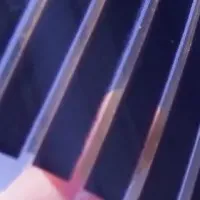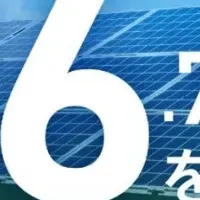
Huawei Digital Power Convenes Forum for Grid-Forming Technology and ESS Safety Innovations
Huawei Digital Power Hosts Innovative Forum for Grid-Forming and ESS Safety
On June 12, 2025, Huawei Digital Power gathered stakeholders in the energy sector at the Grid Forming & Energy Storage System (ESS) Safety Forum held in Shanghai. This pivotal event brought together clients, partners, insurance companies, and certification organizations within the photovoltaic and ESS industries to discuss insights and trends concerning grid-forming technologies, business practices, and the development of a safety ecosystem for energy storage systems.
During the forum, Steven Zhou, President of Huawei Digital Power's Smart PV ESS line, delivered an engaging keynote highlighting the evolving role of ESS in the global energy transition. He emphasized that as the integration of renewable energies into the grid escalates, ESS technology is not just pivotal for operational stability but is also faced with unprecedented challenges.
Huawei Digital Power launched the ESS Safety Initiative, aiming to elevate safety standards in energy storage systems to unprecedented heights. This initiative is designed to foster a collaborative atmosphere among all involved parties to enhance the industry's safety protocols continuously.
Emphasizing Safety Standards
Huawei has introduced their latest FusionSolar 9.0 Smart PV + ESS solution, which integrates grid-forming capabilities within all scenarios, thereby promoting the extended adoption of safety standards across the board. The company has stipulated four core non-flammability features to uphold security: non-flammable, non-explosive, non-propagating, and non-toxic. The cell-to-grid security model enhances system reliability, ensuring maximum protection as the technology develops further.
Key insights were shared by industry experts such as Robert Liew from Wood Mackenzie and Patrick Zank from VDE, who focused on how grid-forming technology can stimulate investments in renewable energy. They underlined the necessity of unified standards and market confidence as crucial elements to support large-scale applications of these innovative technologies.
A notable presentation came from Vannsith Ith of SchneiTec and Billy Qiu from TÜV SÜD, who elaborated on Cambodia's first industrial-scale ESS project. TÜV SÜD's empirical tests on Huawei's PV + ESS grid-forming capabilities showcased its potential in enhancing smart grid networks in Southeast Asia.
Overcoming Technical Challenges
Chen Danqing, CTO of Huawei's Grid-Forming ESS division, identified key technical challenges faced by large-scale commercialization of grid-forming technology. These challenges include ensuring operational stability across multiple devices, damping broadband oscillations, providing robust overload support, and maintaining device safety and reliability.
To tackle these challenges, Huawei presents its Smart String Grid-Forming ESS technology. This innovative system extends grid-forming capabilities through the entire energy cycle, from generation to consumption, redefining the necessary standards for grid-forming performance at all operation levels. Rigorous empirical tests at projects in Qinghai and Xizang demonstrated its effectiveness in high-performance scenarios.
Building a Safety Ecosystem
The significance of a nurturing safety ecosystem for ESS was further discussed by Chen Weipeng from Munich Re, who shared insights on safeguarding ESS projects. According to him, true system safety must encompass the entire lifecycle of ESS installations. The integration of Smart String Grid-Forming ESS technology is pivotal in enhancing visibility and control over safety measures within the energy sector.
Huawei's latest security systems incorporate a unique battery pack design termed Panshi, utilizing a three-tier insulation mechanism that simultaneously aims to prevent thermal runaways and cascading effects from battery fires. Moreover, their advanced digital management platform improves operational transparency and allows for timely fault notifications, enhancing the overall safety protocol.
To validate the safety capabilities of its Smart String Grid-Forming ESS, Huawei collaborated with the esteemed DNV for extreme ignition tests. Demonstrations during the forum included penetration tests and thermal propagation scenarios, effectively affirming the system’s compliance with critically stringent safety standards.
Huawei's dedication is clear as it fosters advancements in ESS and actively collaborates with industry partners to embody a green and sustainable future. The ESS Safety Initiative reflects Huawei’s commitment to enhancing fire suppression specifications and establishing a comprehensive risk assessment framework for energy projects, thereby ensuring a secure energy future.
As Huawei Digital Power progresses forward, it remains steadfast in delivering innovative PV + ESS solutions that contribute significantly to the sustainability ambitions of the energy sector.
Topics Energy)










【About Using Articles】
You can freely use the title and article content by linking to the page where the article is posted.
※ Images cannot be used.
【About Links】
Links are free to use.